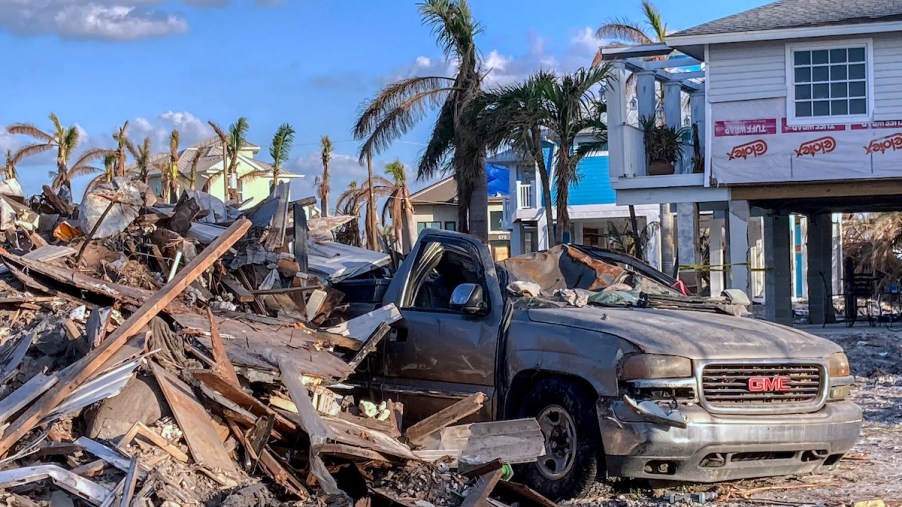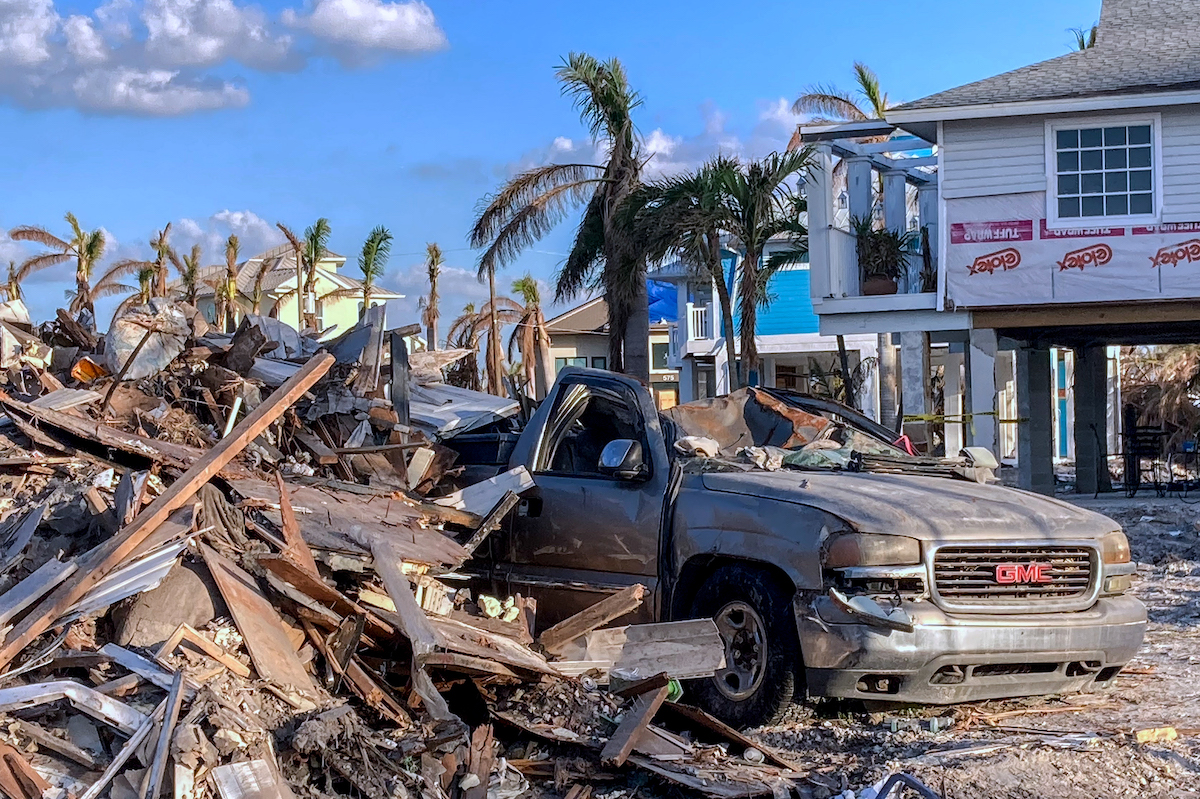
Do You Have the Right Car Insurance to Cover Hurricane and Other Storm Damage?
Drivers in nearly all U.S. states must carry minimum liability car insurance coverage. However, in most cases, that protects only human occupants involved in accidents. If you don’t have enough insurance coverage, you might have to pay for vehicle repairs out of pocket. So, does car insurance cover hurricane damage?
Fortunately, optional car insurance policies cover vehicular damage caused by severe weather. However, you must have the proper coverage.
Hurricane Ian sparks car insurance concerns

In late September, Hurricane Ian wrought extensive damage in Florida. It’s considered one of the deadliest hurricanes in recent history, responsible for many fatalities and millions of flooded homes. A recent Carfax report concludes that Hurricane Ian also prompted 338,000 new car insurance claims related to flood damage.
That brings the estimated number of flood-damaged cars to 738,000 this year. Flooded vehicles usually smell musty and can develop mold. In severe cases, a water-damaed car’s electrical system might stop functioning.
However, scammers looking to sell damaged cars to unsuspecting buyers can easily conceal these issues. Wet carpets and seats can be replaced, and a freshening spray can cover the smell. So Carfax cautions buyers to be wary about purchasing vehicles after major storms.
Watch out for cars with too-good-to-be-true prices from private buyers who won’t provide flood history reports. Some states, particularly New York and New Jersey, are also home to more flood-damaged cars than others.
Comprehensive insurance covers storm-related car damage
According to Consumer Reports, flood damage often totals a car. That’s because excess water in a vehicle’s engine can create stalling problems. If the car is submerged, that usually renders its engine useless.
Even if your vehicle’s major mechanical components aren’t damaged, many insurance providers will still consider flooded cars undrivable. Fortunately, Bankrate says you can be reimbursed for the car’s value if you have comprehensive insurance. It will also cover vehicular damage caused by hail or lightning strikes.
Comprehensive insurance also covers damage that occurred as a result of said storms. For example, if a strong wind flips your car, this coverage will compensate you for repairs. It will also take care of repair costs if debris, such as rocks or tree branches, hits your car.
How much does comprehensive car insurance cost?
The cost of comprehensive car insurance varies depending on where you live and other factors, but it’s usually affordable in most areas. In 2019, the NAIC estimated the average cost was $171.87 per year. States more vulnerable to hurricanes and tornadoes often have some of the most expensive premiums.
If you plan to purchase comprehensive car insurance, Bankrate says not to wait until the last minute. Some insurance providers will pause issuing new policies soon after a storm warning. That includes additions to existing collision coverage plans, so buy comprehensive insurance at least 48 hours before a storm is expected.
Comprehensive car insurance covers not only repairs needed due to acts of nature. It also pays for damage caused by deer or other large animals.
Acts of vandalism, vehicular theft, and fire damage also fall under the comprehensive umbrella. Many drivers also don’t know they need comprehensive insurance to cover broken windshields.
Comprehensive coverage won’t cover worn-out components like windshield wipers or brakes, but collision insurance will. Having both policies on top of required liability coverage gives you full protection for costs related to motor vehicle accidents.


